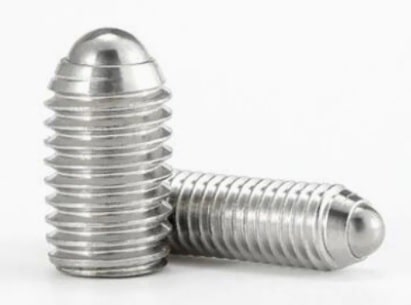The 5 types of set screws
Set screws also known as grub screws are used in a wide variety of applications. But did you know they come in different variations, and each variation has an intended use. Set screws are used to lock pulleys, collars, or sprockets to a shaft. Most set screws use a hex drive, but sometimes you will find a slotted drive. Socket head set screws usually disappear below the surface it is being driven into, so be mindful when looking for one. In this article we will discuss the 5 types of set screws and why their tips make them unique, here are the 5 types of set screws.
1. KNURLED CUP POINT
This point is used for the quick and “permanent” location of gears, collars, pulleys, and sprockets on shafts. The knurls on the bottom of the set screw are in a counter-clockwise locking shape to help prevent the set screw from loosening and help resist vibration. The bottom of the set screw is also counterbored for maximum locking power. These knurls can cause small marks on a shaft which can leave a small burr and cause interference issues when removing a shaft.

2. FLAT POINT
The flat point is used where parts must be frequently reset, it causes little or no damage to the surface it bears against. It can be used against hardened shafts, usually with a ground “flat” for better contact, and as an adjusting screw.

3. OVAL POINT
The oval point set screw is ideal when no deformation to the part it bears against is desirable. It is also used for frequent adjustment and seating against an angular surface. An application where this set screw would be used is a circular “U”-shaped groove or axial “V”-shaped groove machined into a shaft. It may locate the oval point to prevent rotation or for axial adjustment

4. CONE POINT
The cone point is used for the permanent location of parts, the deep penetration provides high holding power. The cone point is also commonly used for fine adjustments and pivots.

5. DOG POINT
A dog point set screw is used for the permanent location of one part to another part. The point or “tip” of the set screw is to mate into a pre-drilled hole on a shaft, for example, allowing for a permanent position of both parts. A set screw can either be a “Half Dog Point” or “Full Dog Point” set screw. The difference being half dog points have a shorter “tip” used for limited clearance applications.









